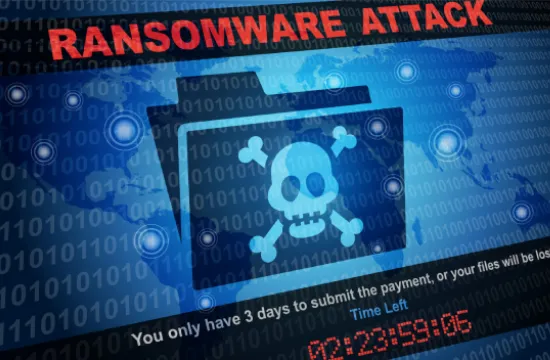Most Common Types of Ransomware
Ransomware has rapidly evolved into one of the most dangerous forms of cybercrime, and understanding its most common types is crucial for anyone looking to protect their organization or personal data. While all ransomware aims to extort money by restricting access to systems or data, the methods and severity can vary greatly depending on the variant. Among the most widely seen types is crypto ransomware. This type encrypts files on a victim’s device, rendering them inaccessible without a decryption key. The attackers then demand payment—often in cryptocurrency—in exchange for the decryption key. Victims are usually given a deadline, after which the data may be deleted or the ransom may increase.
Locker ransomware takes a different approach. Instead of encrypting individual files, it locks the user out of their entire system. The screen may display a ransom note or even impersonate law enforcement agencies claiming illegal activity to scare victims into paying. While this form is disruptive, it usually doesn’t impact files directly, which means that recovery can sometimes be easier if the device can be unlocked without paying the ransom.
Scareware is another type that uses intimidation tactics. It often presents itself as a fake antivirus or system alert, claiming that the computer is infected with viruses. Victims are urged to purchase fake software or pay for unnecessary “cleaning” services. While less technically damaging than other forms, scareware relies heavily on social engineering and still poses a financial threat.
Doxware, also known as leakware, is more insidious. Instead of just locking or encrypting data, it threatens to publicly release sensitive or embarrassing information unless a ransom is paid. This can be especially harmful to businesses handling customer data or proprietary information. It adds an element of reputational risk to the financial one.
Ransomware-as-a-Service, or RaaS, is a growing trend where cybercriminals rent out their ransomware tools to affiliates. These affiliates carry out attacks, and the creators take a share of the profits. This model lowers the barrier to entry for less technically skilled attackers, leading to a broader spread of ransomware campaigns.
Mobile ransomware targets smartphones and tablets, often spreading through malicious apps. Once installed, it can lock devices or encrypt data, just like its desktop counterparts.
Each of these ransomware types presents its own set of challenges. Recognizing the differences can help guide your security strategy, inform your employees, and strengthen your organization’s defenses against future attacks.
Emerging Trends in Ransomware Threats
Ransomware threats continue to evolve, and the strategies behind them are becoming more sophisticated and aggressive. One of the most prominent trends in recent years is the rise of double and even triple extortion tactics. In double extortion, attackers not only encrypt files but also steal sensitive data, threatening to publish or sell it if the ransom is not paid. Triple extortion adds another layer, often involving direct pressure on customers, partners, or employees of the victim organization to force payment. This multilayered extortion approach amplifies the impact and raises the stakes significantly for victims.
Another emerging trend is the increasing use of artificial intelligence and automation by cybercriminals. Threat actors are now using AI-driven tools to identify vulnerabilities, optimize phishing campaigns, and even dynamically adapt ransomware payloads to avoid detection. These tools reduce the time and effort required to carry out attacks and make it easier to launch large-scale operations with minimal human input.
Ransomware-as-a-Service (RaaS) has also become a dominant force in the cybercrime ecosystem. In this model, developers of ransomware lease out their malicious software to affiliates, who then carry out attacks. This structure has lowered the barrier to entry for cybercrime, leading to an explosion in ransomware activity across industries and geographies. Because RaaS groups often operate like legitimate businesses—with customer support, revenue-sharing agreements, and performance tracking—they’re able to scale their operations quickly and effectively.
Attacks targeting critical infrastructure and public services are also on the rise. Hospitals, schools, transportation networks, and local governments are increasingly being targeted because they often lack the resources to mount a strong defense and are more likely to pay ransoms quickly to restore services. These attacks can have life-threatening consequences and highlight the urgent need for better preparedness in these sectors.
Another trend is the shift from opportunistic attacks to highly targeted campaigns. Rather than relying on mass-distributed malware, many ransomware groups are now performing careful reconnaissance, identifying weaknesses in specific organizations, and tailoring their approach to maximize damage. These attacks often begin with social engineering or phishing to gain a foothold before spreading laterally through the network.
As ransomware continues to evolve, defenders must stay informed and proactive. This means going beyond basic security measures and investing in advanced detection systems, employee training, and incident response planning to stay ahead of the threats shaping the future of ransomware.
Why Ransomware Keeps Evolving
Ransomware continues to evolve because the incentives for attackers remain high and the methods of defense are constantly changing. Cybercriminals are financially motivated, and with many victims willing to pay ransoms to restore access to critical data, there is a steady stream of profit fueling innovation. As security technologies improve, attackers are forced to adapt their tools, tactics, and procedures to bypass modern defenses. This constant push and pull between attackers and defenders drives the evolution of ransomware.
One key reason ransomware keeps evolving is the increased accessibility of advanced tools. Ransomware developers now operate in a business-like ecosystem, offering their code and infrastructure through Ransomware-as-a-Service (RaaS) platforms. This allows even those with limited technical skills to launch complex attacks. As more actors enter the space, competition drives innovation, with each group striving to create more effective, stealthy, and lucrative ransomware variants.
Another factor is the changing nature of cybersecurity environments. Organizations are moving to the cloud, adopting remote work, and integrating more connected devices into their networks. These shifts introduce new vulnerabilities that attackers can exploit. To remain effective, ransomware must evolve to take advantage of these emerging attack surfaces, whether it’s through exploiting misconfigured cloud settings, targeting remote desktop protocols, or bypassing endpoint protections designed for traditional office networks.
Additionally, law enforcement efforts to dismantle ransomware groups or trace cryptocurrency payments push cybercriminals to update their tactics. Some have started using privacy-focused cryptocurrencies to avoid detection, while others split their operations across multiple countries to avoid coordinated takedowns. These efforts to evade accountability further drive the development of more complex and resilient ransomware infrastructures.
The success of previous attacks also plays a role. When a particular ransomware campaign is effective—disrupting services, stealing data, or securing large ransom payments—it sets a new standard that other groups aim to surpass. This leads to new innovations, such as combining ransomware with data exfiltration, adding public pressure tactics, or targeting backup systems directly to eliminate recovery options.
Ultimately, ransomware evolves because it has proven to be an effective and profitable tool for attackers. As long as vulnerabilities exist and organizations remain unprepared, cybercriminals will continue to refine their methods. To stay ahead of these threats, businesses must understand not just how ransomware works today, but how it’s likely to change in the future.
How to Protect Against Different Ransomware Variants
Protecting against different ransomware variants requires a multi-layered cybersecurity strategy that combines technology, policies, and user awareness. Since ransomware can enter an organization in various ways—such as phishing emails, malicious websites, remote desktop protocol (RDP) exploits, and supply chain attacks—no single solution is enough. The key to effective protection lies in minimizing exposure, detecting threats early, and responding quickly to prevent widespread damage.
The first step in ransomware defense is strengthening endpoint security. Advanced endpoint protection platforms can monitor for suspicious activity, block known ransomware signatures, and detect behavioral anomalies that may indicate an attack in progress. These tools often use machine learning and real-time analytics to identify threats even when the ransomware variant is new or previously unknown.
Regular system updates and patch management are also critical. Many ransomware attacks exploit unpatched vulnerabilities in operating systems, applications, or network services. Keeping all software up to date ensures that known security flaws are closed before attackers can exploit them. Automating patch deployment helps maintain consistent coverage across the entire IT environment, reducing the risk of oversight.
Email security is another major component. Since phishing remains one of the most common ransomware delivery methods, organizations must deploy robust email filtering tools that block malicious attachments and links before they reach users. Employee training also plays a vital role. Teaching users how to recognize phishing attempts, avoid unsafe downloads, and report suspicious activity can significantly reduce the likelihood of an accidental infection.
Backups are essential for ransomware recovery. However, they must be properly managed to be effective. Organizations should maintain secure, offline, and immutable backups that cannot be altered by ransomware. These backups should be tested regularly to ensure they can be restored quickly in the event of an attack. Ransomware attackers increasingly target backup systems, so isolating backups from the main network is critical.
Network segmentation is another valuable tactic. By dividing systems into isolated zones, organizations can prevent ransomware from spreading freely if one part of the network is compromised. Least privilege access policies also reduce the potential impact of an attack by limiting the systems and data that users or applications can access.
Finally, incident response planning is a must. Having a clear plan that outlines the steps to take during a ransomware attack—such as isolating infected systems, notifying stakeholders, and involving law enforcement—can reduce downtime and improve outcomes.
With the increasing variety and sophistication of ransomware variants, organizations must remain proactive, continuously improve their defenses, and stay informed about the latest threats to effectively safeguard their data and operations.






